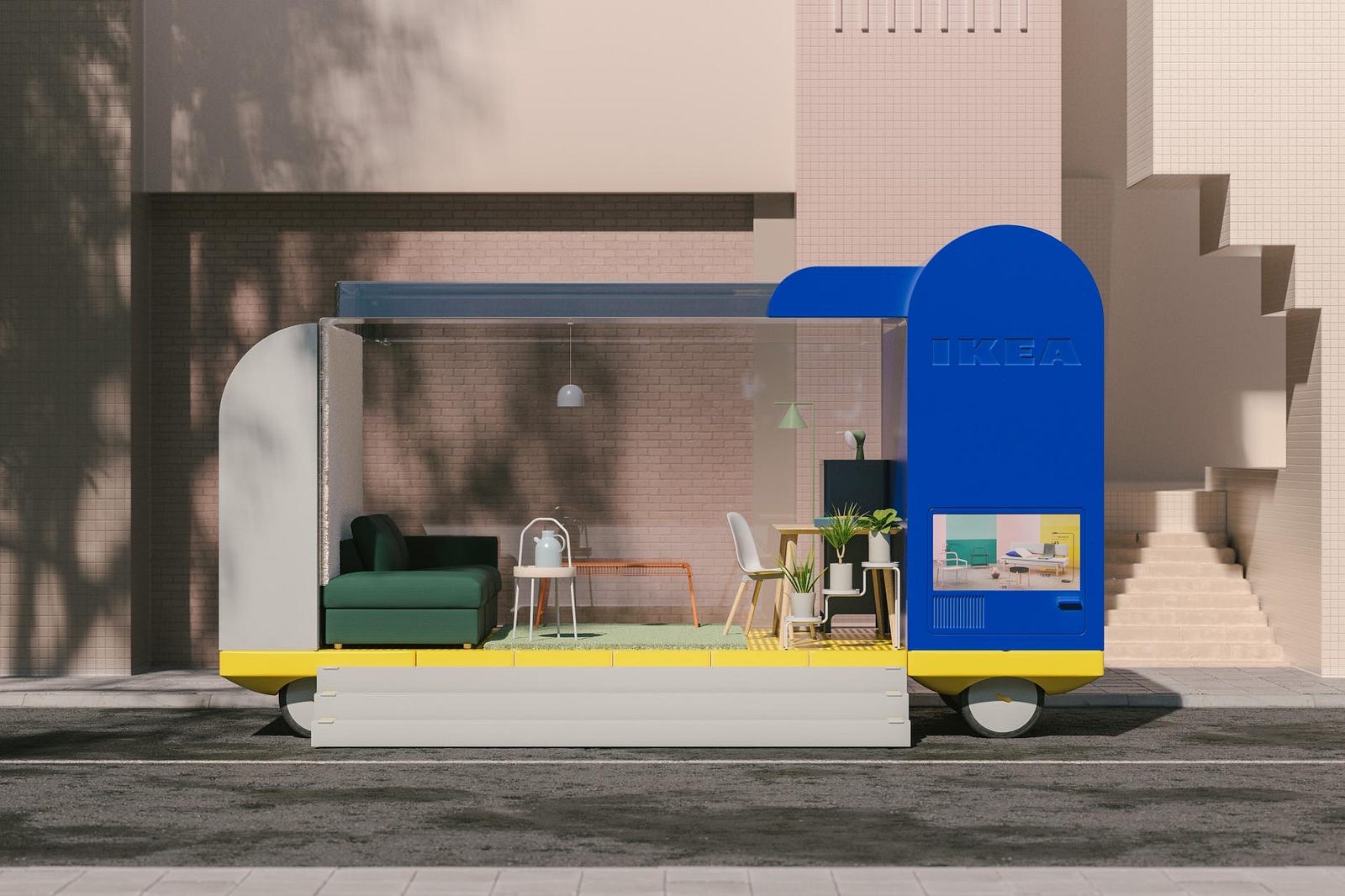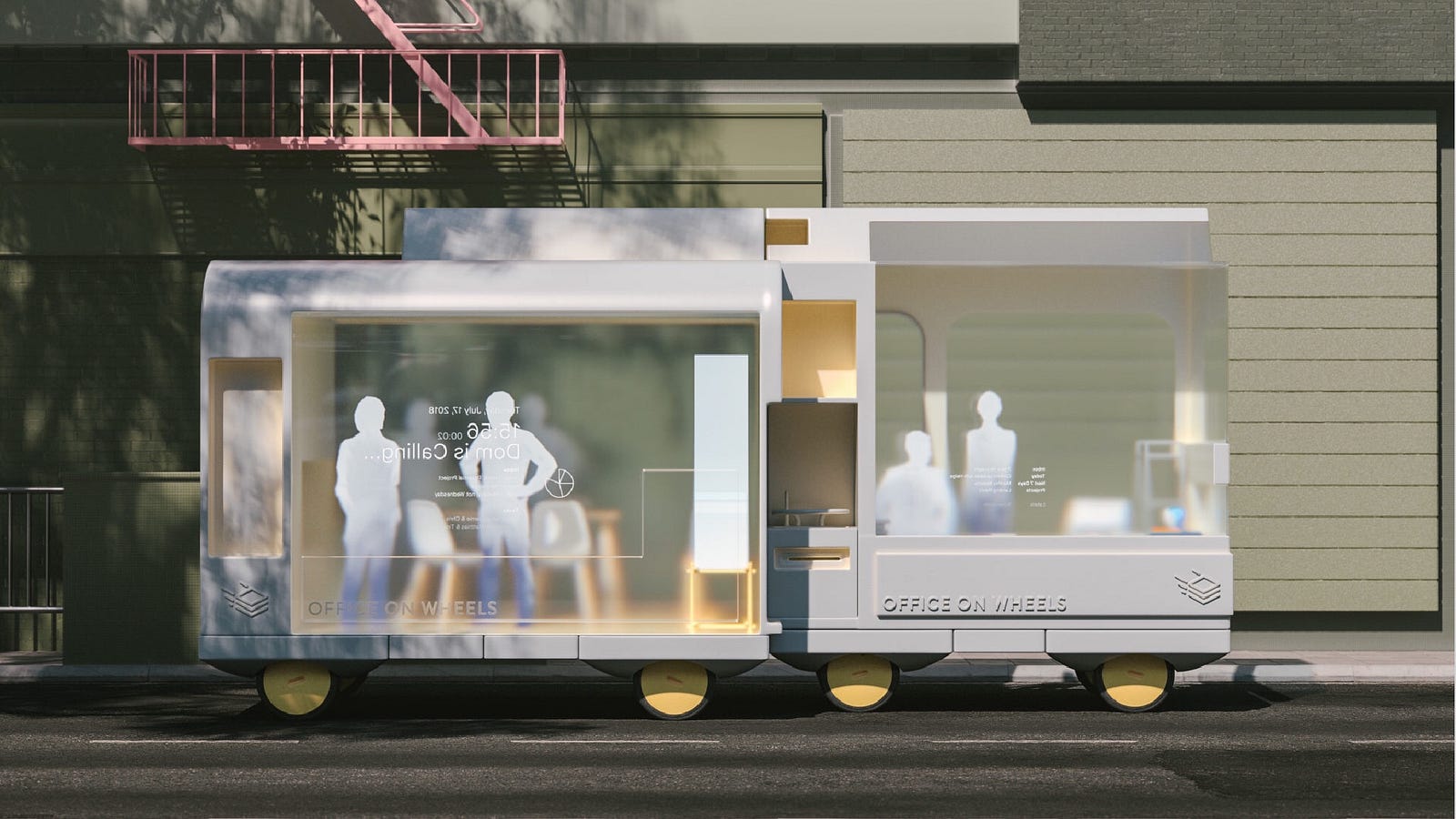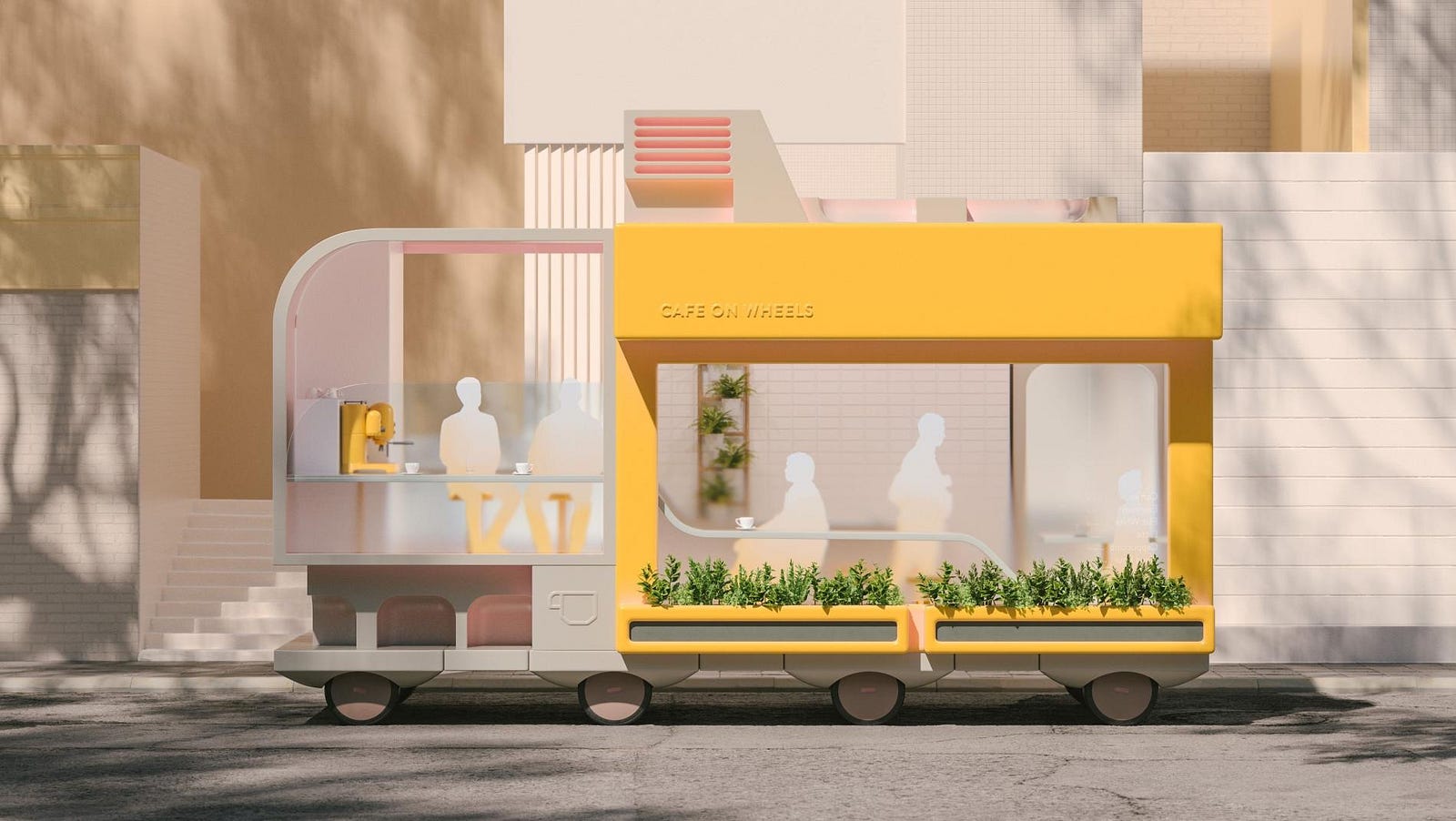IKEA nailed it. Ålmost.


IKEA nailed it. Ålmost.
Thoughts on Apple Car, Part 121
Home furniture company IKEA has an innovation lab called Space10, which is exploring all kinds of trends in living, home decor, internet of things, food, and now transportation.
Why? Isn’t it funny, that a company that is so much about doing things on your own (assembling furniture) now thinks about ways for you to do less (driving) yourself?
Sounds like they do have a point:
„In a future where people no longer have to worry about driving, vehicle interiors can expand to a point where we no longer are designing cars, but rather small spaces. Then it’s suddenly an area where we have a lot of experience in.“
I agree.
Autonomous cars will eventually be about the interior design of smart rooms on wheels.
IKEA calls this „Spaces on Wheels“ and went all the way of imagining a driverless future in a number of contexts:
Only a few of them are actually realistic and achieveable.
For example, the design of the moving office:


What they understood is that people would want to stand up in an office space, and that is why the room is so elevated. They did not give specifications, but those are certainly higher in size than regular minivans or even trucks.
Space10 goes behind the scenes in a deep-dive report on the changing transportation industry:
Back to the design, I would argue that the carriages they came up with are not thought through in terms of user experience.
One, the entry into the car is not shown. The floor is substantially higher up from the ground than what is already achieved by low-floor buses of city fleets.
Two, they do not really show an interior design. We only get half-blurry peeks into the inside of what is supposed to be office space. The large windows make sense, but a room is all about the materials, organization and design of the space.


What is the opportunity here?
There has been quite some discussion about this concept vehicles, not only from an industrial design standpoint but also on the initial conceptual level.
Here is Transportationist David Levinson on Twitter:
I am not sure which side to take. Maybe we do not have to. There will be single person cars that drive themselves and are slim and nimble, made for inner city rush hour. But we will also see the suburban commuter market being shaken up by autonomous cars and ride sharing. And even if I am going in a bigger car, I can also go alone.
There have been studies for decades that show how commute traffic jams are full of people sitting alone in their cars, wasting space and resources enormously.
This psychological dynamic probably won’t change with AVs, but they can still unlock the potential of selfdriving, electric, shared vehicles which will end up elevating utilization to a degree where the number of cars globally can be cut back step by step.
What are the other IKEA use cases?
This cafe on wheels make sense for communities or business districts, however this use case is not taking much advantage of autonomous or shared vehicles.


I expect the business opportunity of selfdriving cars to be much more in the interfaces a platform like this need to offer: What are the jobs a robot car can do for people, besides taking them to places?
It will certainly not be getting coffee, but much more complex and automated business interactions and transactions.
But that’s another story.
